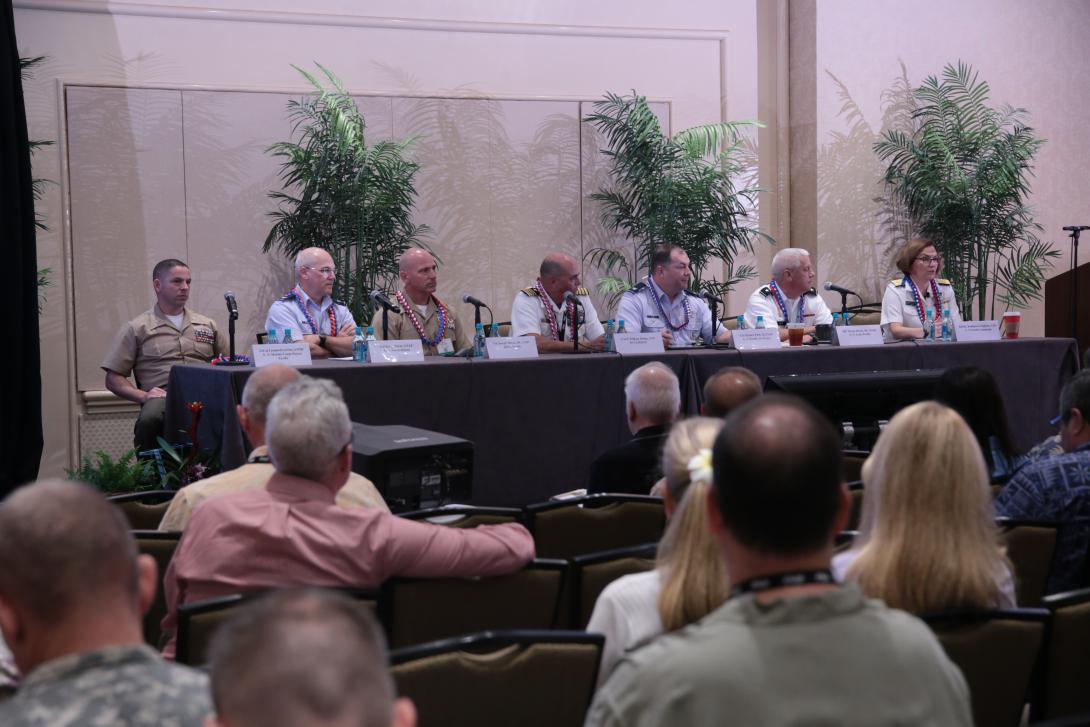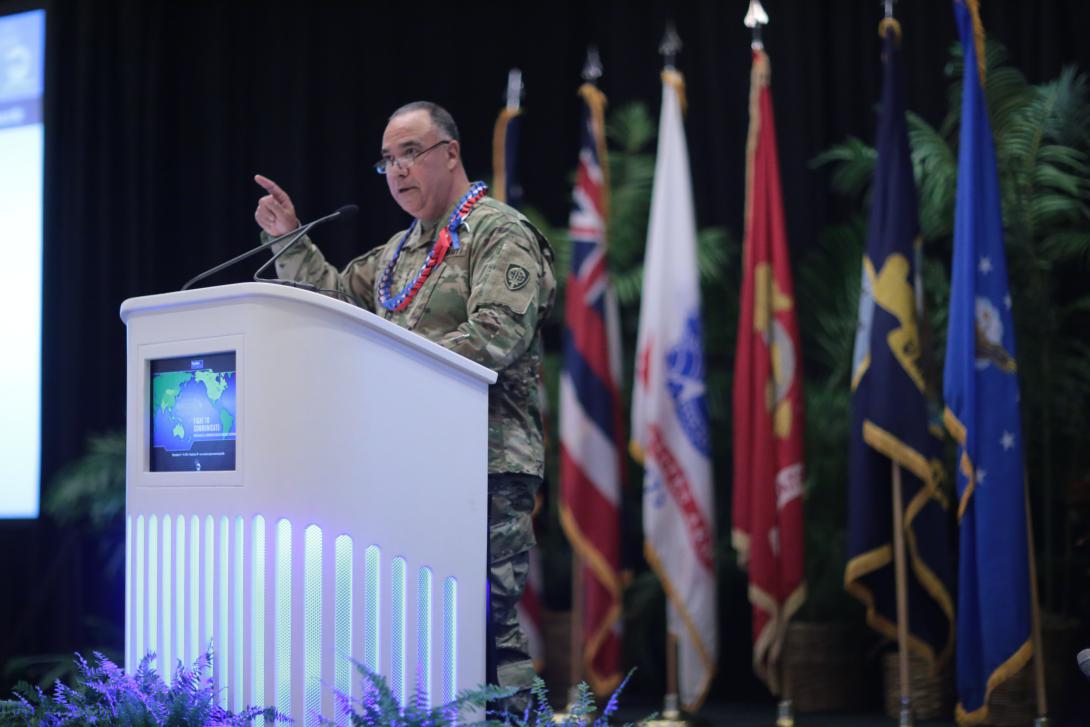For the Pacific, It’s All About Networks
TechNet Asia-Pacific 2015
The SIGNAL Magazine Online Show Daily, Day 3
Quote of the Day:
“You can’t be a little pregnant; either you’ve got the network or you don’t.”—Col. Joseph "Jay" Matos III, USMC, commander, DISA Pacific
Communication is vital to maintaining any relationship, including those between allies and their military forces. The U.S. Pacific Command is working to network its increasingly mobile and forward-deployed force while concurrently maintaining good links with allies to prevent regional concerns from erupting into full-blown crises.
The importance of this connectivity and how it is to be achieved were topics of discussion on the final day of TechNet Asia-Pacific 2015, held November 17-19 in Honolulu. The conference’s theme of Fight to Communicate: Operating in a Communications-Degraded Environment featured less degrading and more enabling.
Lt. Gen. John A. Toolan, USMC, commanding general, U.S. Marine Forces Pacific (MARFORPAC), told the Thursday breakfast audience that maintaining connectivity among expeditionary forces and allies will be vital to responding to emerging challenges in the vast region. For the Marines, the key is to ensure continued networking among the forward deployed force. Gen. Toolan emphasized the importance of the expeditionary force being forward deployed, saying, “If we are not forward deployed, then we will not be in the right place in the right time. Then, we will have all our allies and partners folding.”
And connectivity among those allies also is vital, especially with China unilaterally establishing new presences in the Sea of Japan. “The possibility of miscalculation is serious, so we need to be present,” Gen. Toolan said, adding that the best way to avoid it is to have good command, control and communications (C3). The general noted that China has told the United States to have good C3 in place with U.S. allies to help avoid dangerous miscalculations.
The Chinese action in the South China Sea is being done for a purpose, he added. And, China also is making a lot people angry. As a result, the command is starting to see a greater demand for Marines and the capabilities they provide in the Indo-Pacific region.
This region, which encompasses half the globe, has a major effect on international security. Lt. Gen. Anthony G. Crutchfield, USA, deputy commander of the U.S. Pacific Command (PACOM), said, “Our security environment is as dynamic as it has ever been. We have a resurgence of Russia and the unpredictability of Kim Jung Un and Korea.
“What’s new is the emergence of uncertainty as the salient characteristic of the world in which we live,” he declared.
Planning for the future is important, the general allowed, but no one can expect their plans to play out entirely as intended. “However much we plan for the future, our chance of getting it right is exactly zero,” Gen. Crutchfield stated. “[Our planning] is going to fail, but that’s OK.” The key is to “look at how to make what we have, and what we’re building, better.”
Defense budgets are coming down, he added. The military will not have budgets to build technologies so far out in the future. So, the United States must focus on adaptation and innovation—specifically, spiral development. “With the right people with the right technology, we’ll be able to do the right things,” Gen. Crutchfield said. “The most advanced weapons being developed today will be fielded first in the Pacific.”
Even facing these advanced technologies, adversaries know where to strike. “The networks’ advantage and vulnerability will be the first things our enemies go after,” offered Rear Adm. Kathleen M. Creighton, USN, J-6, PACOM. These networks should remain in the realm of the services to ensure effectiveness, she continued. They are constructed by the services as enterprise networks, and it is hard for a combatant command to influence those networks. Capt. William A. Dodge, USN, commanding officer, Naval Computer and Telecommunications Area Master Station, Pacific, echoed that sentiment. “The network itself is a weapon system, and when we’re in combat, it’s that commander’s weapon system,” he declared.
Gen. Toolan explained that the Corps’ Expeditionary Force 21 lies at the heart of its needed connectivity, as it will extend the singular network instead of creating a new one. New platforms such as the F-35 will be linked to this network, which will create new types of data available to forward echelons. The Corps network is not at odds with the Joint Information Environment (JIE), he emphasized, although it does require flexibility and simplicity.
Capt. Dodge offered that every platform should have some capability to be a network node. This way, communications can hop across these nodes until they are out of the contested environment and able to jump up to satellites. Col. Joseph A. "Jay" Matos III, USMC, commander of the Defense Information Systems Agency (DISA) Pacific, was succinct about the need for constant networking. “You can’t be a little pregnant; either you’ve got the network or you don’t.”
Mark your calendars now for TechNet Asia-Pacific 2016, to be held November 15-17 in Honolulu.







Comments